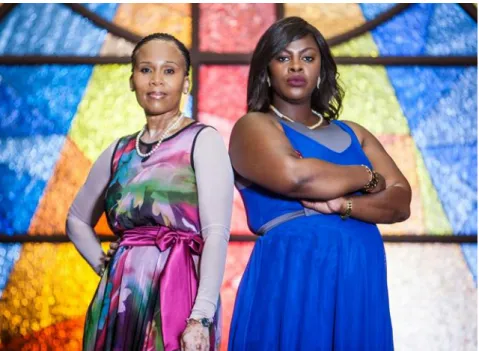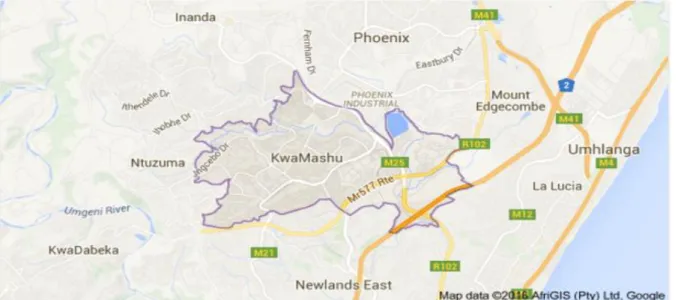These are some of the features of the two genres (soap and soap opera), however, genres can change and become hybrids, which often leads to genre innovation (Marshall and Werndly, 2002). Due to the soap's established location, the study will be conducted in Durban, South Africa. The codes and conventions of the soap opera are discussed and this includes a brief history (Allen, 1985) of the genre.
Representation is one of the most important processes in the 'cultural circuit' model (Du Gay et al, 1997). Stuart Hall described the concept (representation) as “the production of meaning from the concepts in our minds through language” (Hall, 2013:3). These conventions are discussed further in the following sections, with a particular focus on women and soap operas, and the character of the matriarch.
These bodily characteristics of the black African-American woman are evident in black South African women. The description of the matriarch in this study is not within the matriarchal society but within the telenovela. This scenario forced women to be strong, take care of and take care of the family in the absence of patriarchs.
Uzalo contains the primary binary opposition in the setting of the two families and by extension the two matriarchs. Levi-Strauss model helps in examining the binary oppositions used in the deliberate differential construction of the two matriarchs. He described the functions in two ways; the actions of the character in the story and the results of such actions to the story (Berger, 1997).
Data were discussed comparatively and in the light of the literature review and the theoretical framework that underpins the study. This section evaluates how generic codes and conventions and narrative techniques of the soap opera genre are either used or subverted in the Uzalo. According to Hobson, the connotations of reading are the visual part of the characterization in soap operas (Hobson, 2003:68).
She is also one of the council members in the church, known as a "spiritual advisor" (Masson, Interview, August 26, 2015). Uzal's audience undoubtedly identifies with the soap's cultural identity or context (encompassing the history, culture and specific problems of a particular local context). This is evident in the placement of matriarchs in the context of crime/secular (MaNgcobo) and religion/Christian values (MaNzuza).
In this way, Matriarchs can be described as keepers of narrative balance (Todorov, 1977).

GATEKEEPER LETTER
ETHICAL CLEARANCE
INTERVIEW SCHEDULE
In your opinion, what are the traits of each character that the audience can identify with i) the most ii) the least. How do you see a possible similarity between the personal struggles of these matriarchs, a reflection of the challenges most women you know face raising their families in villages. In what ways has the placement of Uzalo in KwaMashu affected the representation of the matriarch compared to American soaps like Bold and Beautiful and local soaps like Generations, Isidingo.
How the typical roles of "mother" ("good mother" and "bad mother"), business woman, lover/mistress, trouble maker may be changed or different in some way by the story set in KwaMash (and specifically the world of the church and the world of crime) . Uzalo is set in a predominantly Zulu culture - as you see it in your presentation (for the series writer/producer) or portrayal (lead actress) of the matriarch. Matriarchs are usually represented as empowered women and we can see this in some ways in Lindiwe and Zandile, but how can the fact that South Africa is a predominantly patriarchal society affect the portrayal of these women in Uzal.
How the role of the matriarch characterizes the value clash between modernity-traditional Zulu culture, religious-secular values and Christian-criminal mindsets in the villages.
INFORMED CONSENT FORM
Please do not hesitate to contact any of the above persons if you would like further information about this research, or if you wish to discuss any aspect of the interview process. The findings will be published as research projects/dissertations and may be published in academic journals. I understand that I may choose whether or not my name will be cited in comments and information attributed to myself in the final research documents.
PICTURES
SCENES IN EPISODE 4, SEASON 2
The surroundings are dark. They are excited. She is strong, but he seems weak. He gets a flashback to his childhood in a similar situation when his father tells him he is weak (the viewer witnesses his disconnection with the Xulu's). The guests ask where Nkosinathi is, Ayanda whispers to them that he is at the Gateway meeting with his girlfriend.
Nkosinathi is with his girlfriend MaNzuza angrily takes off her apron and goes to the bedroom. MaNgcobo tells him to toughen up because they had a tough decision to make and they chose the best decision. This is the first time the audience witnesses the darkness in the Mdletshe house (symbolic lighting effect).
She scolds Nkosinathi for not being home and then tells him how proud she is of him. The viewer cannot see MaNgcobo's facial expression because the smoke distorts her face, but Mxolisi's face is in full view of the audience. It is only when she talks about how they are bound together that the audience sees emotion from MaNgcobo, but even then her expression is not captured.
He talks about how he's buried under them under the office they work in. She tells him that fate brought them together, that death brought them together.
TURN IT IN DIGITAL RECEIPT

